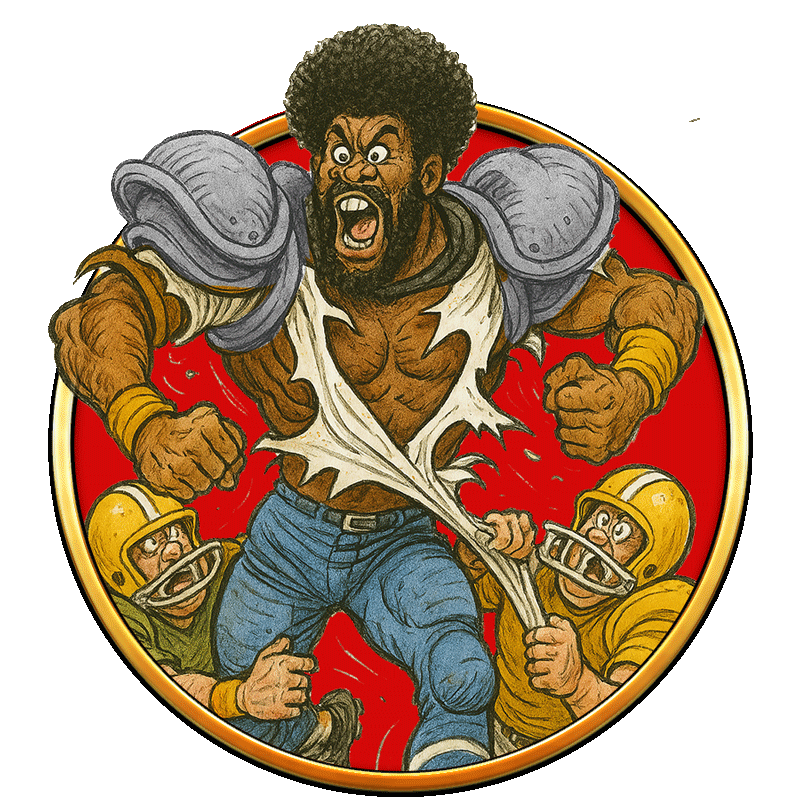Before Nike invented skin-tight uniforms made from synthetic polymers engineered by NASA, there existed a garment so flimsy, so paper-thin, it might as well have been made from Kleenex and dreams: the tearaway jersey.
Popularized in the 1970s by players like Earl Campbell, Tony Dorsett, and any wide receiver brave enough to run a slant route without fear of public nudity, the tearaway jersey was the greatest loophole in defensive football since “accidentally” stepping on a wideout’s ankle in a pile.
The idea was simple: If the defense can’t tackle you, they can’t stop you. And if your jersey disintegrates like tissue paper every time someone grabs it, good luck catching you. Earl Campbell once finished a run with no jersey, no pads, and no regard for human decency, just a pair of shoulder pads and 1,800 yards of fury.
These things came off faster than Studio 54 pants after midnight. Defensive linemen would get a handful of polyester, pull, and end up looking like they were trying to tackle a ghost. Somewhere, an equipment manager was chain-smoking Pall Malls, muttering, “Not again.”
The NCAA eventually banned tearaways in 1981, presumably because someone in the rules committee watched a Texas game and realized they were one Earl Campbell run away from full-frontal football. It was the end of an era, and the beginning of players being actually expected to carry defenders instead of slipping out of their shirts like a greased pig at a church picnic.
Today’s jerseys are tight enough to count chest hair, but they’ll never be as iconic as the tearaway. Because nothing says 1970s like a guy barreling down the sideline in a jockstrap and shoulder pads, leaving a trail of ripped fabric and broken dreams in his wake.








